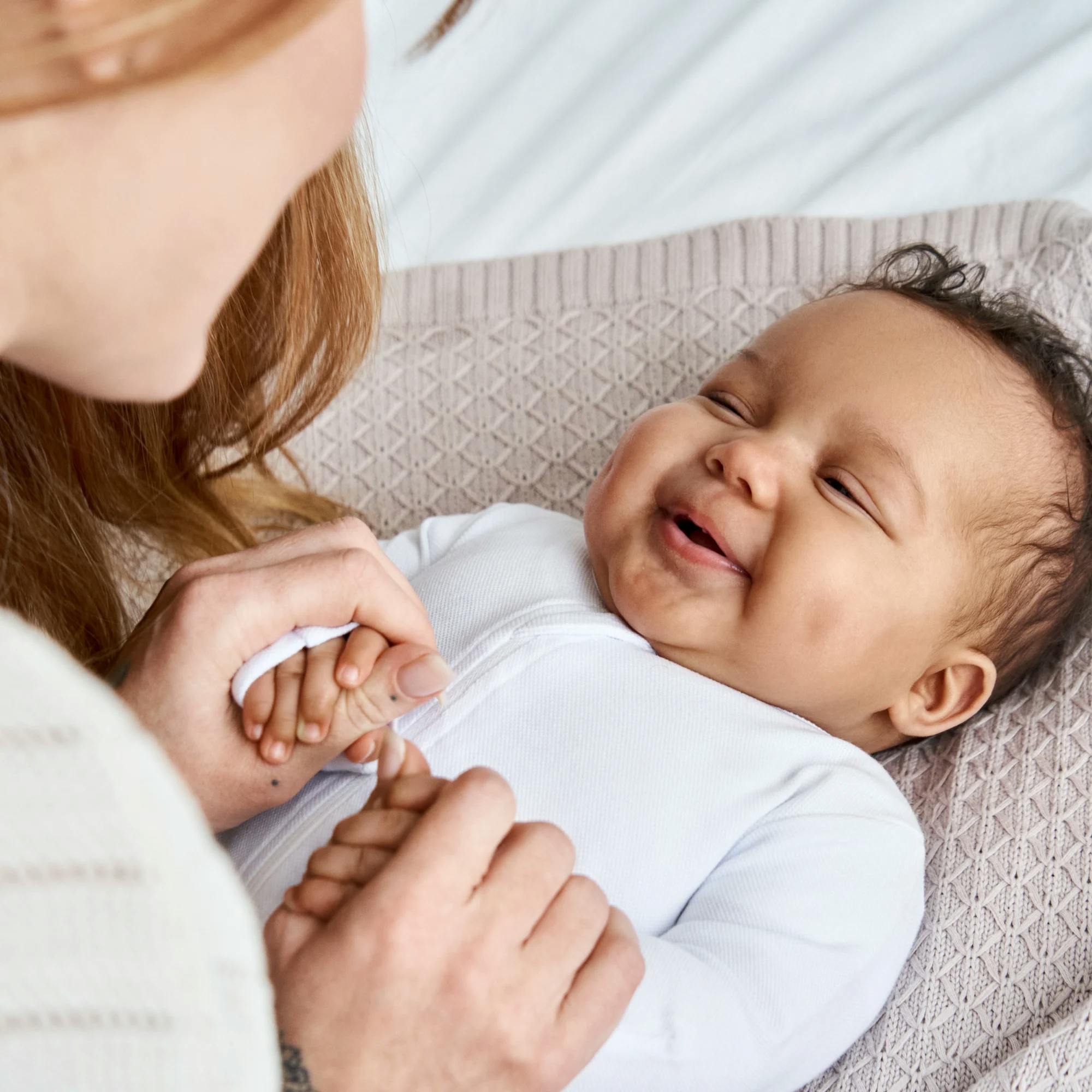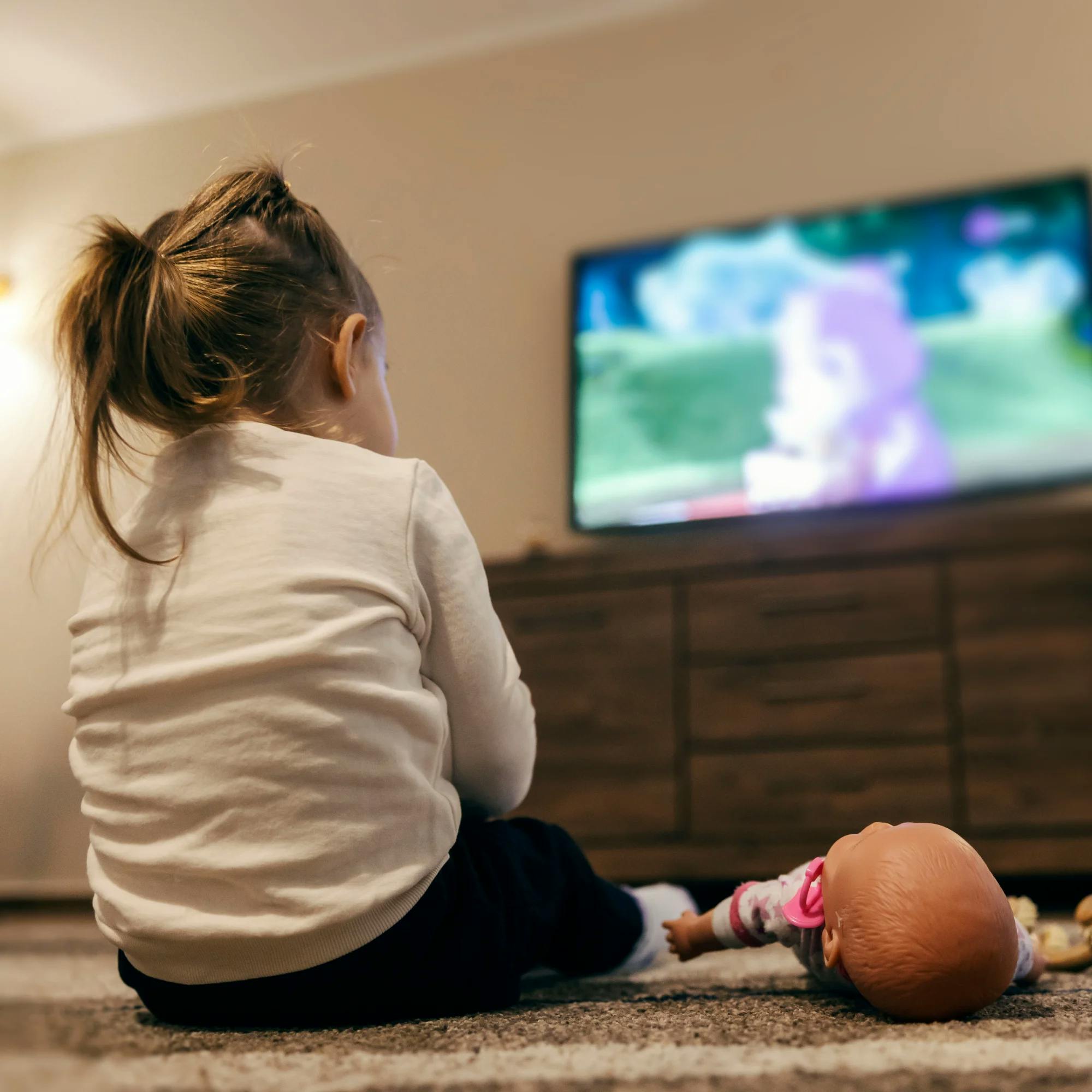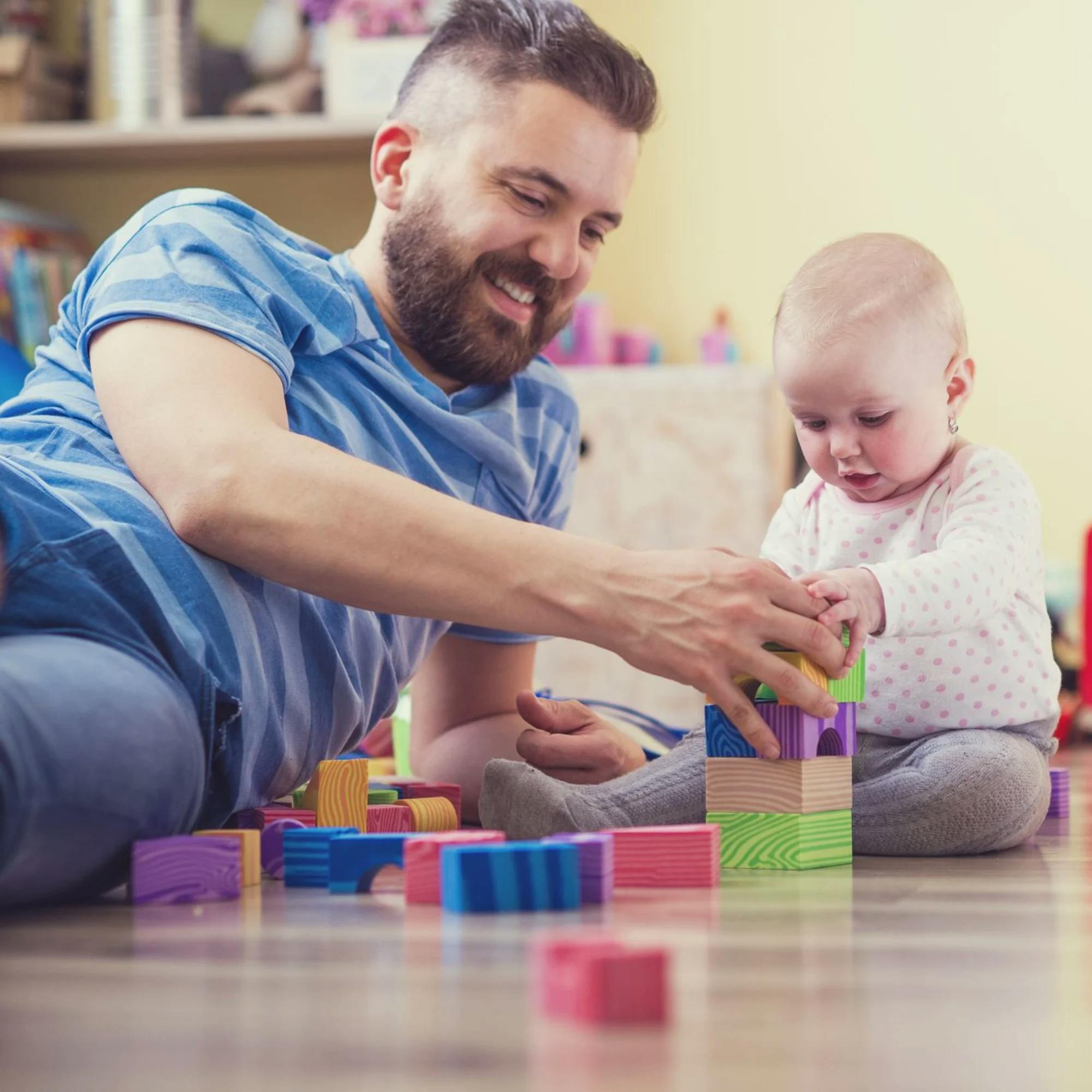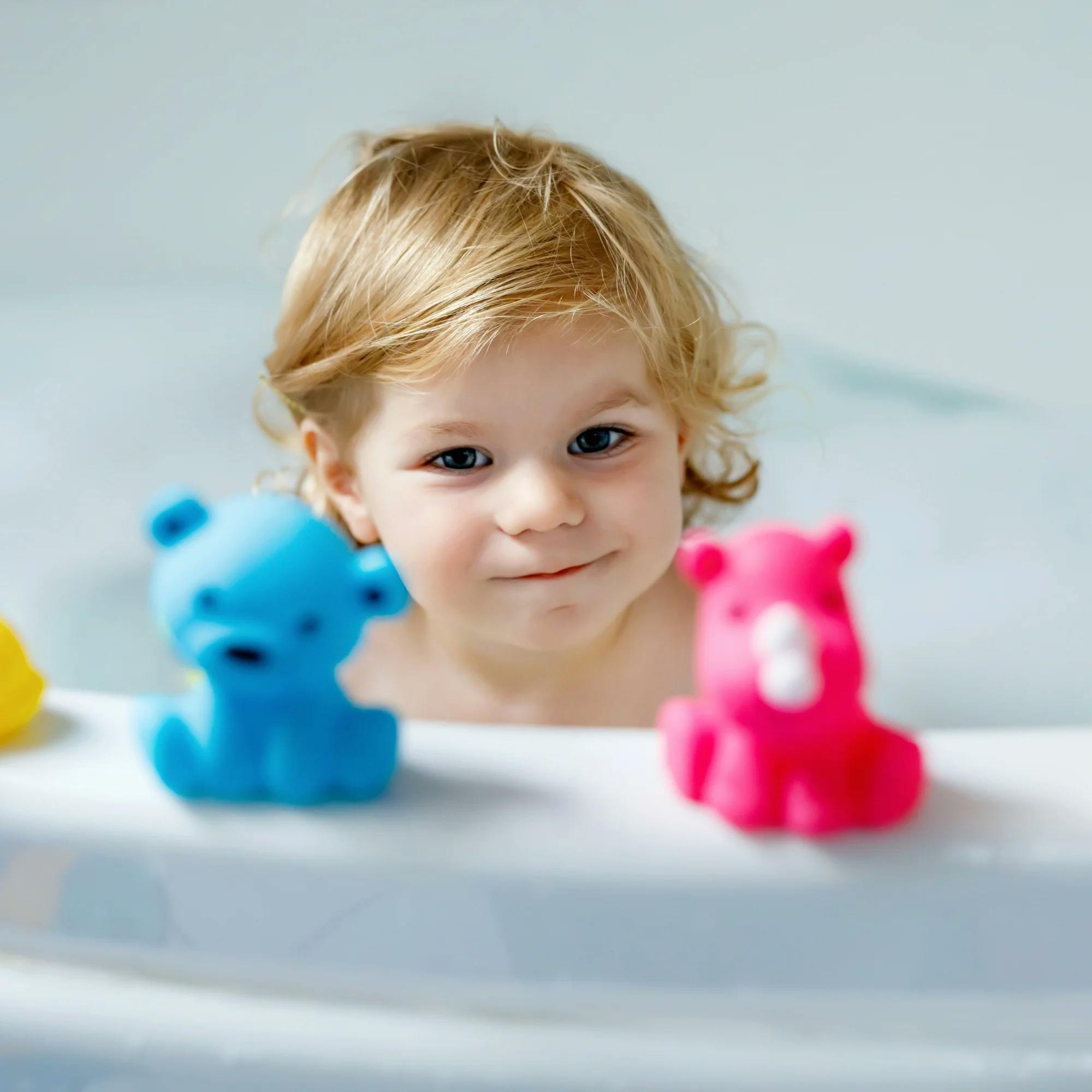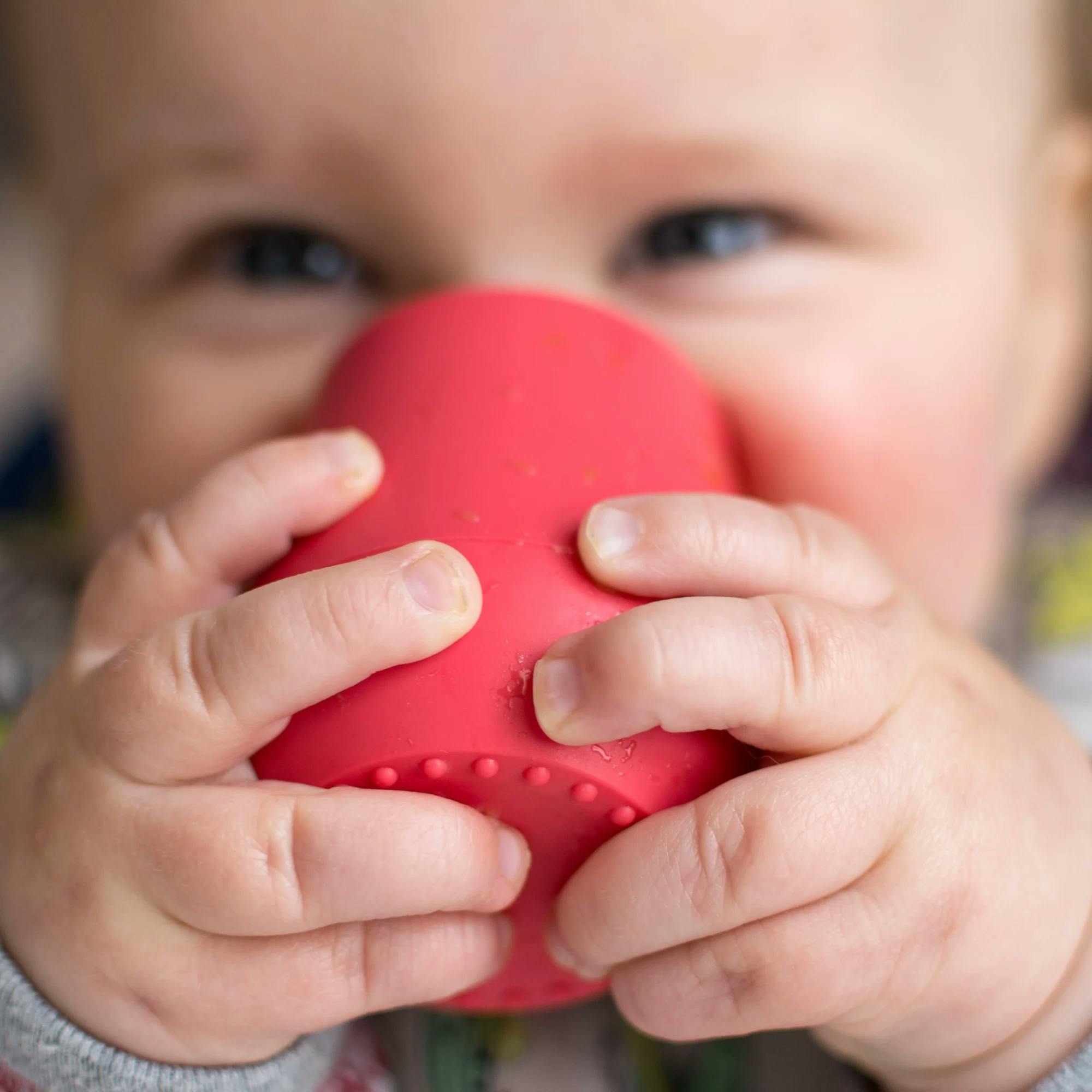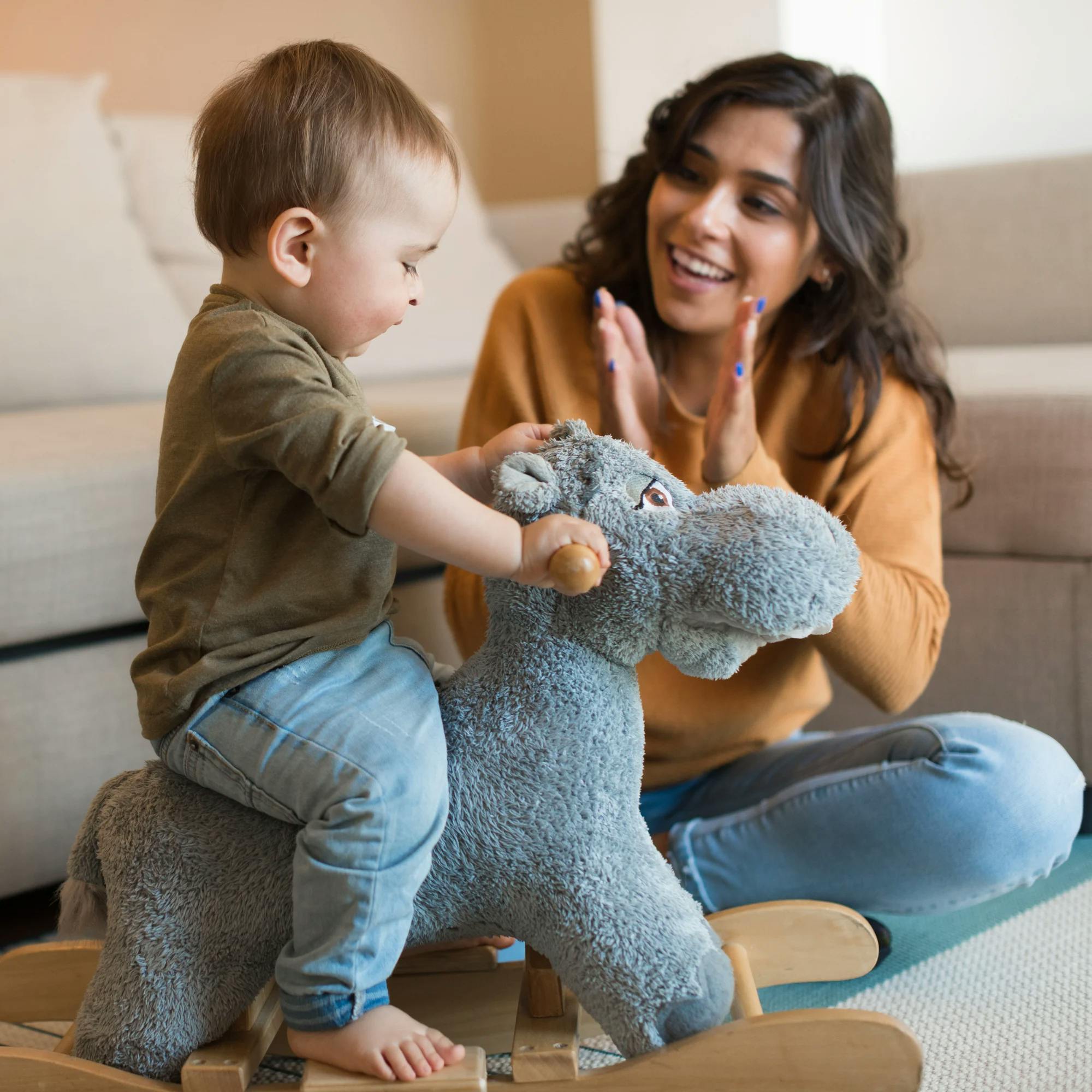By the time your child is 1 year old, they should be communicating with you in a variety of ways–even though they may not be talking yet. There are many ways your baby can express themselves that you may not have realized are communication!
Some of these may be skills your child has been demonstrating for awhile. Others, like first words, may start showing up closer to their first birthday. Let’s review 6 communication milestones your baby should reach by age 12 months, and how to tell if your toddler might have a language delay.


1 Smiling
There’s nothing like your baby’s first smile–and the next one, and the next one! Smiling is a skill that typically starts between birth and 3 months old. So by age 1, you should be seeing lots of sweet, dimpled smiles from your little one!
Smiling is a nonverbal way babies can communicate their feelings. You may see it when reading books together, singing songs, or making silly faces.
Smiling is a way for two people to connect.
Your baby should be reacting to your smiles, as well. Smiling is also a way for two people to connect. This is how babies start to understand the “give and take” in communication. We’ll talk more about that in the next section.

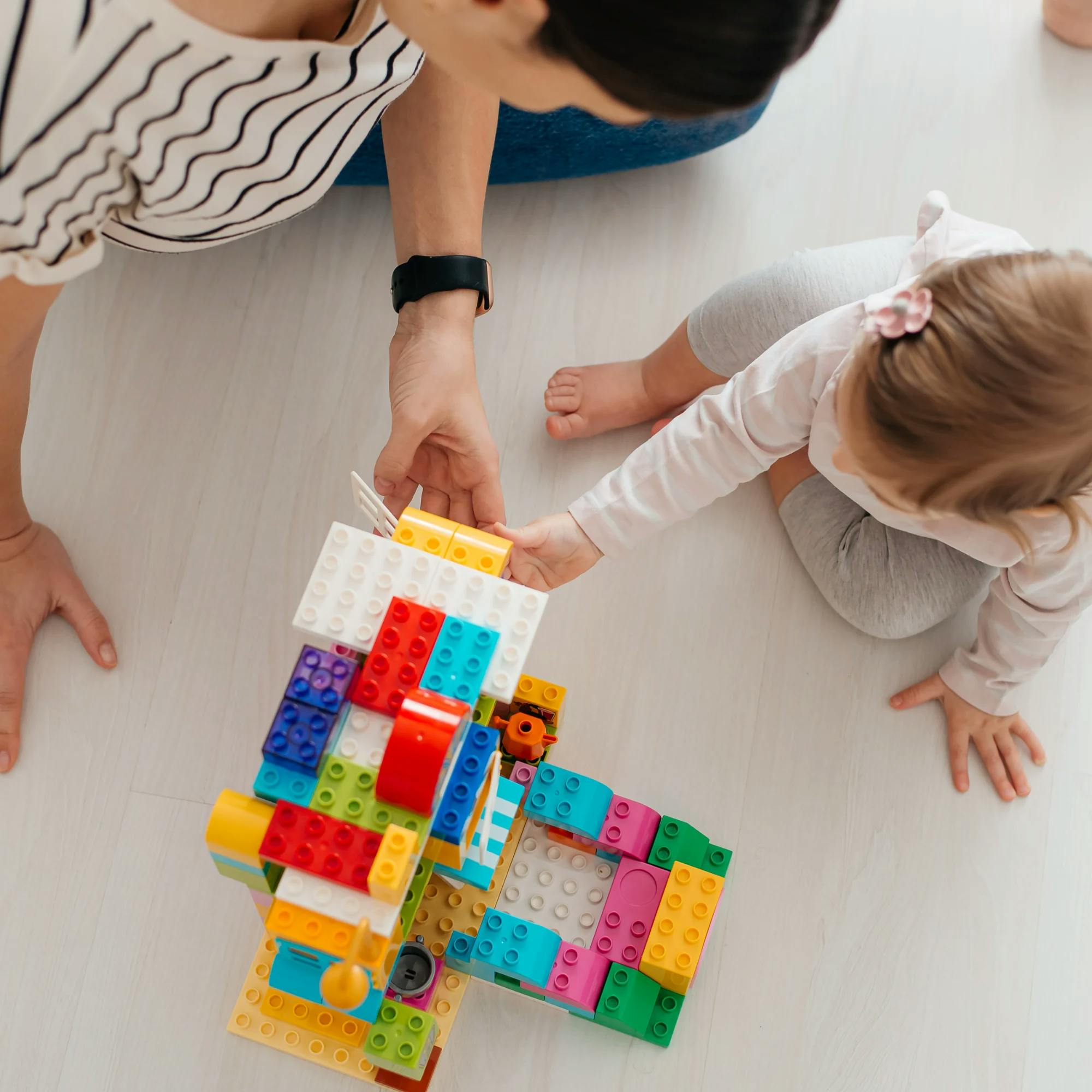
2 Laughing
With this milestone typically happening around the 3- to 4-month stage, your child should have perfected their belly laugh by the time they reach month 12. Like smiling, laughing is a way that babies show they enjoy something.
Two people laughing back and forth is a form of communication. If your baby laughs, then you laugh, and your baby laughs back, they’re actually practicing the back-and-forth nature of conversation. Can you think of a better way to practice communication with your little one than by laughing together? The next time your child gets tickled, be proud of how they’re growing in their communication abilities!

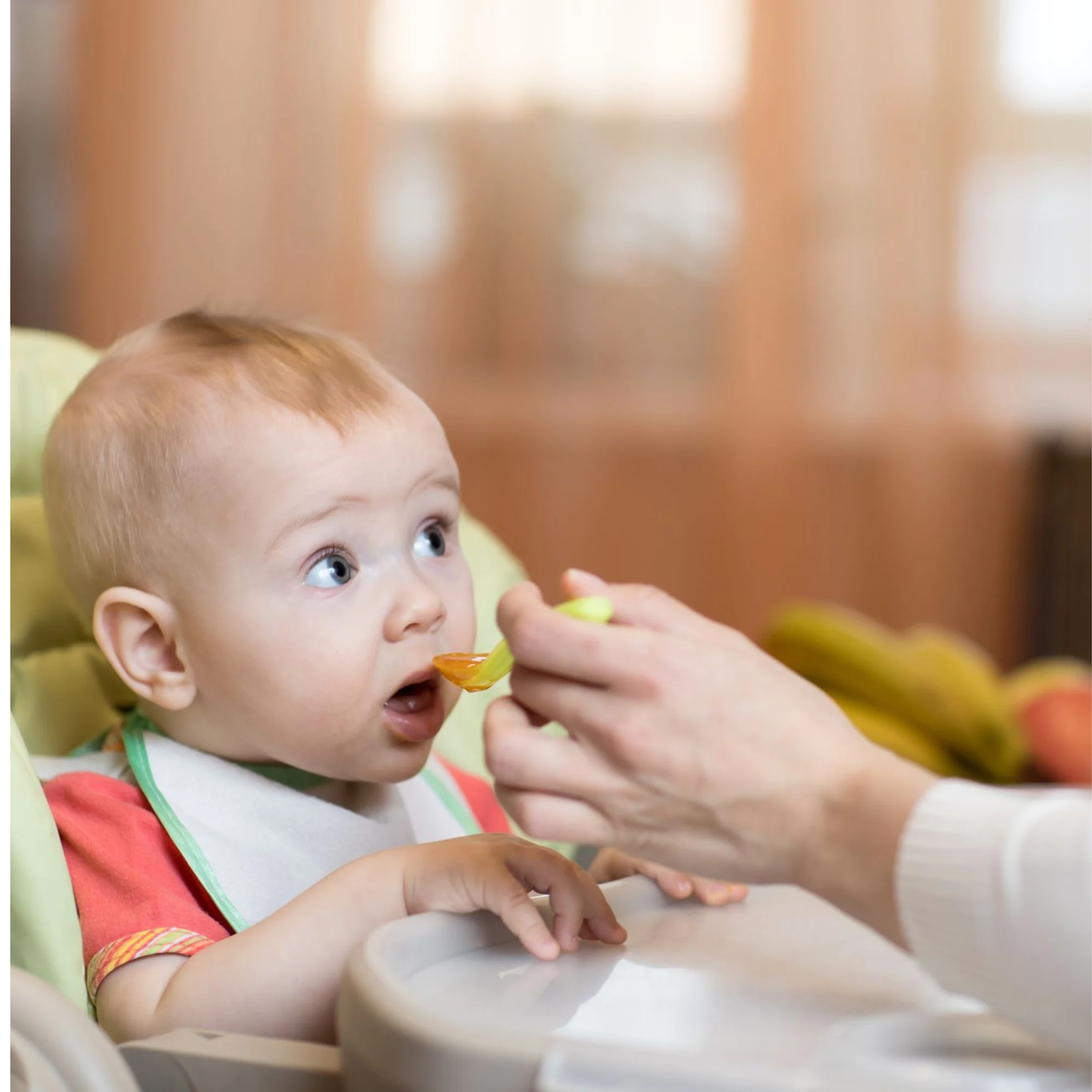
3 Crying
This milestone is one that’s been around since the day your child was born. Babies come into this world crying. So while it’s nothing new to you, keep in mind that crying is a form of communication.
When the crying just won’t stop, it can be hard to deal with. But try to think of it as your child trying to tell you something. Are they hungry? Tired? Need a diaper change? After being your child’s caregiver for the past 12 months, you may notice that their cries sound different depending on their needs. Pretty amazing!


4 Grunting, vocalizing, and babbling
It’s common for 1-year-olds to make sounds like grunting, babbling, and vocalizing to let others know what they want or need. You’ve probably seen it when your toddler is trying to grab a toy but can’t quite reach it. Their grunts let you know they're frustrated and need some help!
You can also hear in their sweet coos and babbles when they’re enjoying something, such as reading a book with you. With each sound or babble, it’s almost as if they’re trying to tell you about the pictures. And most likely, they are! Babies practice talking before they can form all the words they want to say. Reading and playing together is the perfect way to give your child opportunities to practice these early speech skills.


5 Gesturing and pointing
Around 9 months old, your baby should begin to use gestures and signs to communicate with you. For example, the precious way they reach their arms out for you is a gesture, and it’s certainly communication. They’re letting you know they want you to pick them up.
Babies begin to use more gestures such as pointing, waving, and shaking their head as they get closer to their first birthday. They can also begin to imitate simple signs such as “more,” “please,” “milk,” and any other words that are important to them.
Some parents and caregivers worry that if their child uses sign language, they’ll be less likely to start talking. This is far from the truth! Research has shown that using gestures actually helps many kids learn to use words. In child development, gesturing is typically a precursor to speaking.


6 Starting to talk
Around the time a child turns 1, they will likely be saying at least one word. Maybe it’s “Mama” or “Dada,” or “milk” or “dog.” Whatever that first word is, it’s music to every parent's ears! Over time, your 1-year-old should begin to pick up more and more words. Their vocabulary should grow to about 50 words once they are 2 years old.
Around age 1, you child should be saying at least one word. Their vocabulary should grow to about 50 words once they're 2 years old.
Not only should your child be acquiring more words, but they should also start using words functionally, for different purposes. Toddlers typically first learn to label items and objects they see. But over time, you’ll notice your child beginning to use these words to request or comment.

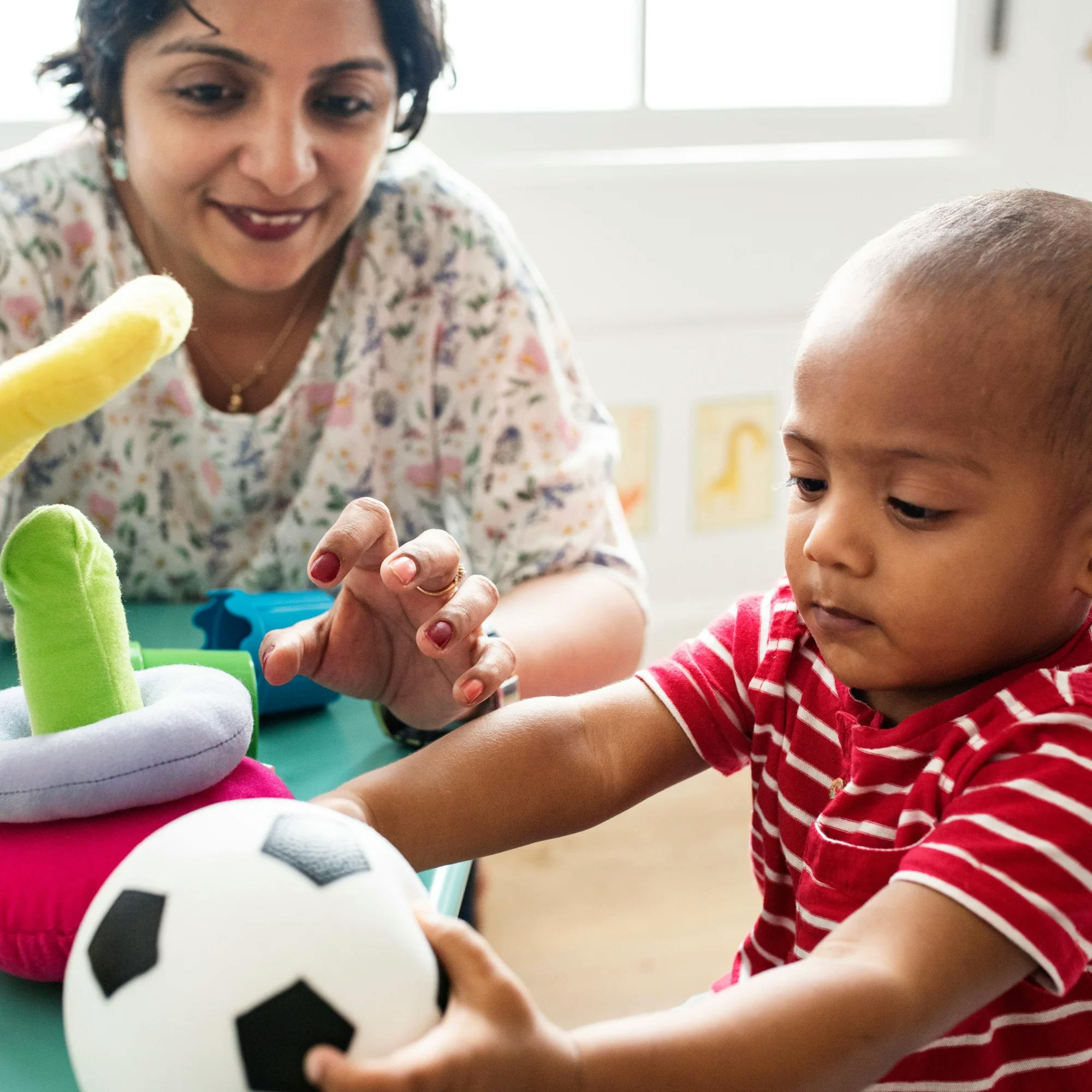
For example, maybe your toddler starts out by saying “book” when they see their favorite book. This is labeling. As they get older, they may ask “Book?” to request that you read a story together. And maybe one day you go to the library, and your child excitedly comments “Book!” to let you know they see lots of books on the shelf.
It’s amazing how one word can be used in so many different ways. Your little one should be picking up this skill as they talk more and more during their first year.
What to do if your 1-year-old isn’t meeting these milestones
What if your baby doesn’t seem to be babbling much? What if your 1-year-old isn’t talking? If your toddler isn’t showing some of the communication skills listed above, consider speaking with a speech therapist. This could be a sign of a language delay.
It’s true that children develop at different rates. But if you aren’t noticing progress in your toddler’s ability to verbalize sounds, make gestures, or say words, they may have a delay. It’s a good idea to have them evaluated by a speech therapist. You can talk with your child’s pediatrician about this, or call a speech therapy practice directly to discuss next steps.
You can also take our free online screener to learn if your child is on track or would benefit from a speech and language evaluation. This quiz is personalized to your child’s age and gives you immediate results.
Remember, the sooner children are able to get the therapy and support they need, the more quickly they can meet their communication goals.
How Expressable Can Help
Concerned your child isn't reaching age-expected milestones? Looking for communication support from a professional? Expressable is a national online speech therapy practice serving children and adults. We treat all major areas of communication and feeding, offer flexible hours including evenings and weekends, and accept most major health insurance plans. We’re proud to have earned more than 3,000 5-star reviews from our clients (4.9/5 average).
Our therapy model is centered on parent and caregiver involvement. Research proves that empowering caregivers to participate in their loved one’s therapy leads to better outcomes. That’s why we combine live, 1-on-1 speech therapy with personalized education and home practice activities for faster progress.
Communication is more than words. It’s how we share how we feel and show who we are. We’re here to help you or your child do just that.
 Abby Barnes, M.S., CCC-SLP
Abby Barnes, M.S., CCC-SLP